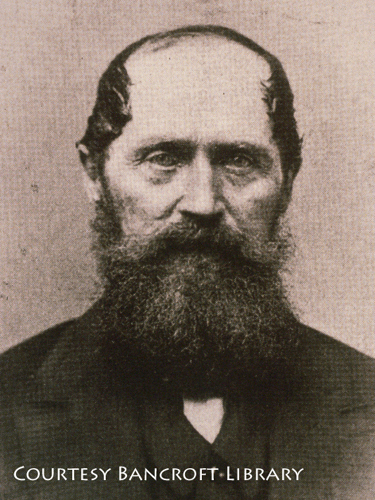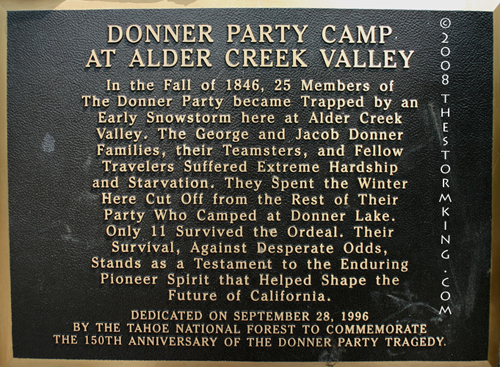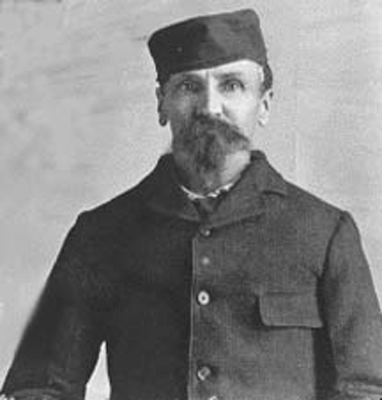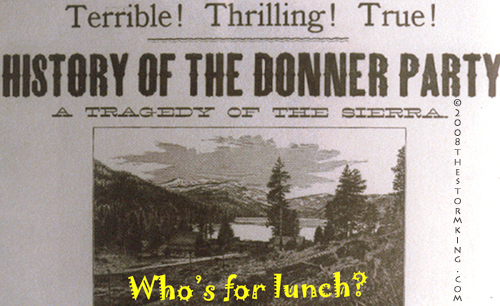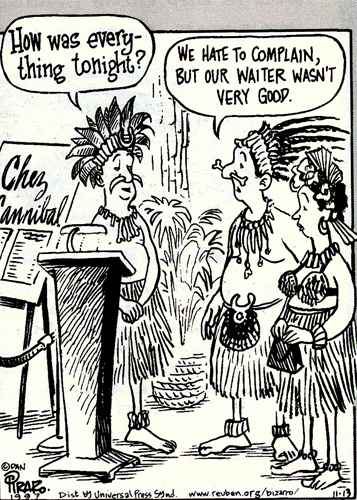 |
|
|
Follow Mark on Facebook for more stories |
||
 |
|||||
|
Tahoe Nugget #154: Cannibals in the West Halloween is fast approaching and it's the season to celebrate the darker side of the human experience. Murder and cannibalism are two of modern society's most serious legal and cultural taboos. One famous example is Louis Keseberg, a member of the Donner Party who was vilified as a murderous cannibal. Although Keseberg was certainly not alone in consuming human flesh to survive the winter of 1847, he was labeled the Cain of California and ostracized by society for the rest of his life. In 1859, a Colorado gold rush lured thousands of greenhorns to the Rocky Mountains. Eastern editors filled newspapers with fantastic tales of the wealth to be had near Pike's Peak, and proclaimed the diggings far richer than those of California. Thousands of hopeful youths, needy farmers, and out-of-work shopkeepers rushed from the Mississippi Valley to Kansas Territory. Many narrowly missed death by starvation and some were reduced to cannibalism. The Blue brothers acquired a sinister place in history when one reached the mines only after subsisting on the bodies of his two siblings who apparently died in route. Charles Gardner, initially nicknamed Phil for his hometown of Philadelphia, later earned the moniker Cannibal Phil after setting out on a journey with an Indian companion and returning alone. The two men had been caught in a blizzard and given up for dead, but Gardner surprised everyone by reappearing several days later. The celebratory mood darkened, however, when Phil unpacked his mule and pulled out a shriveled human leg. Not long after, Cannibal Phil really secured his gruesome reputation when he survived being marooned in a mountain snowstorm by consuming his female companion. Louis Keseberg's grisly reputation as the Cannibal at Donner Lake pales in comparison to the lurid tale of Alfred G. Packer. Packer, a 31-year-old prospector from Allegheny County, Pennsylvania, promised to lead a group of about 20 eager young prospectors from Salt Lake City in Utah Territory to a new gold strike near Breckenridge, Colorado. The group was well equipped with horses, wagons, and provisions when they left Salt Lake in late November 1873, but by January brutal winter conditions had trapped the men at a place now called Cannibal Plateau. Deep snow kept them from hunting, and the party eventually ran out of food. Luckily they encountered the tribe of Chief Ouray, a friendly Indian leader, who offered them flour, meat and other vital supplies. Chief Ouray assured the prospectors that they could remain in his tribe's teepees until warmer weather, but Packer called them quitters and managed to persuade five of the men to accompany him to the diggings where they would all become rich. That was the last anyone saw of the six men until weeks later when a wild- eyed Alfred Packer staggered out of the wilderness haggard and alone. Delirious, he told the authorities an incoherent story of murder and survival. Packer explained that the prospecting party had been caught in a series of vicious blizzards and run out of provisions. He offered conflicting accounts for the deaths of his partners, but the most consistent and lucid one has him returning to camp one day where he found that a crazed Shannon Bell had murdered the other four men with a hatchet. When Bell attacked him, Packer shot him dead in self-defense. To avoid starvation, Packer admitted boiling up the meat from his companions and eating it. In 1989, a forensic team exhumed the bodies of the Packer party. Physical evidence showed that several of the men had been killed by multiple ax blows to the head. Bell's skeleton bore no bullet marks, supporting Packer's assertion that he shot him through the stomach. From cut marks on the bones, the team determined Packer had filleted the dead men. Alfred Packer was imprisoned in a jail cell, but an unknown benefactor passed him a knife blade with which he unlocked his irons and escaped. He eluded the law for nine years until one of the original prospectors from 1873 recognized Packer's distinctive voice in a Wyoming roadhouse and turned him over to Colorado authorities that wanted to prosecute him for the killings. In 1884, ten years after the crime of which he was accused, Packer was tried, convicted, and sentenced to 40 years in prison for manslaughter — eight years for each of his five alleged victims. During Packer's sentencing, Judge M. B. Gerry lamented, "Packer, there were seven registered Democrats in Hinsdale County and you ate five of them!" On January 8, 1901, after 16 years as a model prisoner, Packer was granted parole by outgoing Colorado governor Charles S. Thomas on his last day in office. In 1968, students at the University of Colorado, Boulder named their new cafeteria The Alfred G. Packer Memorial Grill. Tahoe Nuggets are now archived at www.thestormking.com Photo #1: Louis Keseberg portrait.
|
|||||
|

